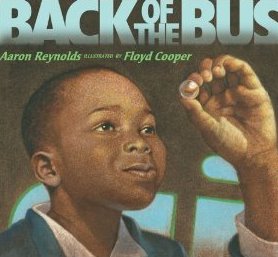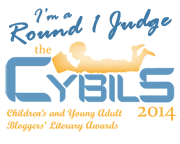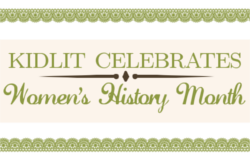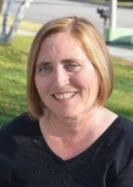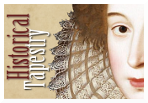 |
| Morris Gleitzman |
I am delighted to welcome celebrated Australian children's author
Morris Gleitzman to The Fourth Musketeer today as part of the Sydney Taylor Award blog tour. Morris received a
Sydney Taylor Honor Award in the Teen Readers category for his novel
Once (the first in a trilogy), an incredibly moving story about friendship set in Poland during the Holocaust (see my
review from June 2010). He is currently on tour in Taiwan, and kindly sent his interview responses via I-Phone (a 21st century writer at work....)
 |
| Once (American edition) |
Q: Here in the States, you're best known for your wickedly funny novels for kids--particularly your
books about cane toads, and perhaps less well-known than in Australia for your many books in which characters confront serious issues. What made you decide to tackle the ultimate in serious topics--the Holocaust? Could you also comment on why you prefer to call
Once and its sequels novels about friendship, rather than novels about the Holocaust?
A: My starting point for these books, even before I decided to set them against the Holocaust, was friendship. I've long been interested in how young people today feel growing up in a world that increasingly seems to be the product of the worst of our human tendencies. I like to write stories that don't shy away from that worst, but which also never lose sight of the best we're capable of. And I think loving friendships are where most of us get to show our best.
I decided to set my story of friendship against a world seemingly full of the most unfriendly behavior and I didn't have to look far for examples. I chose the Holocaust for several reasons, all of them outlined in my author's note in
Once. [These include: Gleitzman's grandfather was a Jew from Krakow, and although his grandfather survived the Holocaust, most of his extended family did not; and Gleitzman's admiration for Polish pediatrician/author
Janusz Korczak, who refused freedom to stay with the children from his orphanage when they were sent to the camps.]
Q: I've read many books set during the Holocaust, particularly those written for children, and I must say that
Once is the first that made me laugh out loud. While on the one hand I felt somewhat uncomfortable from my laughter, I also was struck at how you managed to balance the horrible things that occur in the story with the childlike, naive voice of Felix. What has been the reaction from readers or Holocaust survivors about your unusual use of humor in the story?
A: I think the humor comes not only from Felix's naivety, but most importantly from his optimism. While these two things overlap, they aren't synonymous. Readers have responded very positively to Felix's optimism. Younger readers find it inspirational, I think, in a grim world. Older readers also feel its poignancy.
 |
| Once (Australian edition) |
The Holocaust survivors I've spoken to who've read the book have been hugely kind. Their responses have been among the highlights of my working life. I know some survivors believe the Holocaust isn't a subject for fiction and others feel if you weren't there you shouldn't write about it, so I'm sure there have been other survivors who feel less positively. But none have confronted me. I just hope
Once hasn't caused any of them pain.
Q: For our American readers, there are two published sequels that follow Once: Then, which picks up exactly where Once ends, and Now, which takes place in contemporary Australia and features Felix as an 80-year old grandfather. The sequels have not yet been published in the U.S. but for readers like me who can't wait to find out what happens to Felix, the Australian and British editions are available for sale on-line (Then comes out in the States in May 2011). I am curious as to whether Once was originally conceived as a trilogy, or did the story grow as you started writing?
A: I set out writing Once assuming it would be a single book. A few chapters from the end I realized I didn't want to leave Felix and Zelda there. That's when I started thinking about the other two stories. Originally there was going to be just one more book, but the more I developed it, the more I realized there needed to be two more.
 |
| Once (UK edition) |
Q: Here in the U.S.,
Once is being marketed as a novel for teens, although the protagonist is only ten. What would you consider the appropriate age for children to read this novel?
A: I wrote
Once primarily for my usual readership, eight years of age to about twelve. As I was writing I started to wonder if the story would appeal to older readers as well. But I never lost sight of my core constituency. I'm delighted the book and its sequels are being read by many older readers, including adults. But the emails I've had from teachers telling me about the responses of eight and nine year olds to
Once are some of the most precious I've ever received.
Q: Your
website provides an excellent bibliography of some of the titles you recommend for further reading. Can you tell us a little about the research you carried out in order to write
Once? Did you use survivor interviews as well as memoirs?
A: My research was 95% reading over several years. Plus movies and documentaries and visits to Holocaust museums and Krakow and Auschwitz. I didn't speak to any survivors until after the first draft was finished because I knew at that early stage I would feel the need to try to write their stories, and I'm not equipped to do that sort of writing.
Q: Do you plan to write more novels for young people with Jewish themes?
A: I never set out to write stories about specific racial, ethnic, or religious groups. I say that knowing I may have to hand my Sydney Taylor citation back.
Q: What books are currently on your nightstand?
A: Hitch 22 by Christopher Hitchens.
To the End of the Land by David Grossman.
Life by Keith Richards. [note: links leading to Goodreads added by Fourth Musketeer] They're still on my nightstand because this is the Age of Blogs, and since they were invented authors have had little sleep and even less time to read. Oops, am I writing this out loud? Sorry. Time to grab a few hours sleep before the next interview....
Thanks so much, Morris!
Note: If you haven't read
Once yet, listen to the first chapter (narrated by the author) at the
following link to get a taste of this unique book.

















